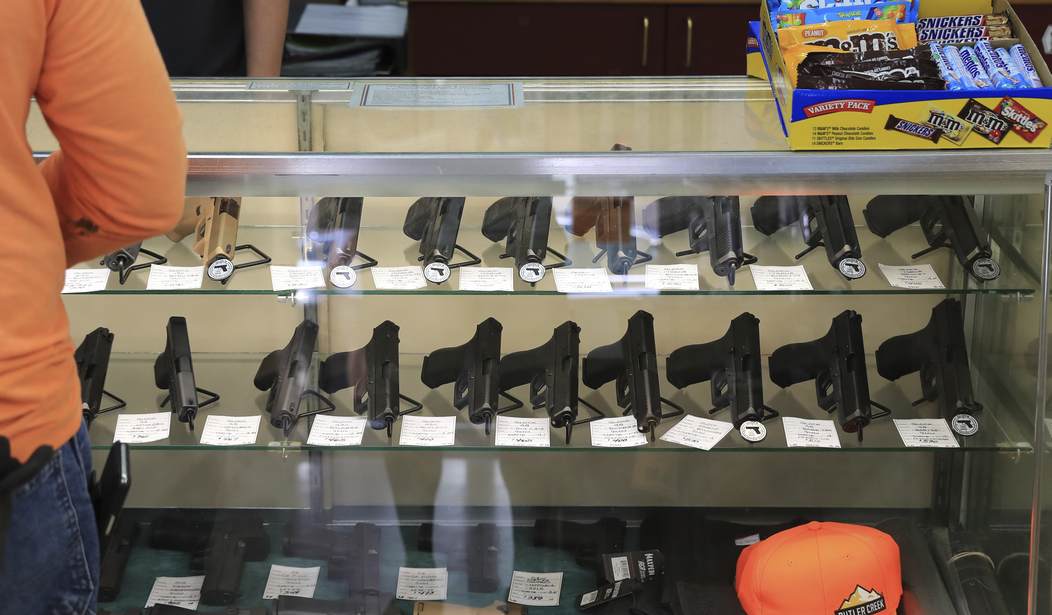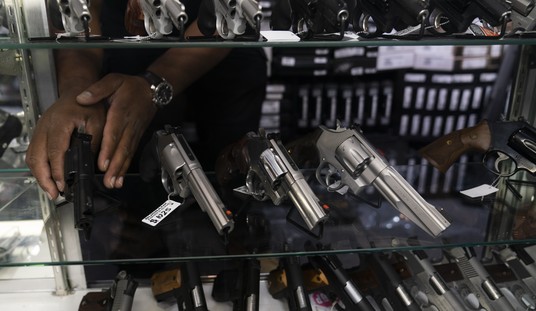In less than two months, the Ninth Circuit Court of Appeals will hear oral arguments in a case challenging California's "1-in-30" law; also known as "one gun a month". Last year a U.S. District Court judge found that the law violates the Second Amendment rights of California residents; rejecting the state's argument that 18th and 19th century regulations on gunpowder, bans on selling firearms to Native Americans, and prohibitions on "deadly weapons" were not appropriate comparisons to California's gun-rationing law, even using a "nuanced approach" to considering the relevance of the statutes.
As is the habit in the Ninth Circuit, a three-judge panel quickly stayed that decision and allowed the law to remain in effect. Ahead of August's oral arguments, both sides have been submitting briefs to the panel. The state has thrown out a number of weak-sauce arguments in favor of the gun rationing law; claiming, for instance, that requiring people to wait for weeks on end to purchase another firearm fits with the historical tradition of gun purchases because at the time the Second Amendment was ratified, gun buyers had to wait for a firearm to be handcrafted or for a shipment of arms to arrive at a particular location before they could be purchased.
The plaintiffs (including the Firearms Policy Coalition and Second Amendment Foundation, along with San Diego Gun Owners PAC and several individuals) noted in their reply to California Attorney General Rob Bonta that if the Ninth Circuit accepts the state's argument, "the government may freely impose any manner or extent of restrictions on the ability of law-abiding citizens to acquire and possess firearms in California so long as the regulatory regime does not create “a functional prohibition on the possession or acquisition of arms.” If one gun per month is fine, what about one gun purchase per year? What about a six-month waiting period, or requiring every gun purchaser to pass a drug test or a polygraph beforehand?
In its amicus brief, the National Shooting Sports Foundation contends that the issue the law is meant to address is "straw purchasing"; a practice that's "as old as the United States, if not older". And yet, as attorney Paul Clement argues, "there was no tradition—not at the Founding, not in the Reconstruction era, and not even for the better part of the 20th century—of restricting people to purchasing only one firearm at a time."
The NRA offered up some history of its own in its amicus brief in Nguyen v. Bonta. According to attorney Joseph Greenlee, multiple gun purchases were common in the Founding era, and colonial-era militia laws often required militia members to have multiple firearms.
When a new militia law took effect, militiamen were ordinarily required to acquire the mandated arms before the first muster. Therefore, when a militia act required militiamen to keep and bear multiple firearms, they had to acquire those firearms promptly. And when militia laws mandated militiamen to keep and bear a case of pistols, because such firearms were sold together, those firearms were necessarily purchased simultaneously.
The California Rifle & Pistol Association, Second Amendment Law Center, and Pink Pistols-Operation Blazing Sword have also submitted an amicus brief laying out the problems with California's argument, while also taking issue with two "analytical issues" in the district court’s "otherwise excellent ruling"; characterizing Bruen as a two-step test and adopting "Bruen’s 'more nuanced approach' when it should not have.
While, fortunately, neither error meaningfully affected the result here, it is vital that courts uniformly and correctly apply Bruen to stop government defendants fromdodging the proper historical burden they must meet. The State’s brief demonstrates exactly how it abuses Bruen under an improper analysis, such as its borderline frivolous argument that acquiring arms does not even implicate the plain text of the Second Amendment. And as always, the State argues that Bruen’s “more nuanced approach” is required, even though there is nothing new about purchasing more than one firearm at a time.
That "nuanced approach" is meant, according to the Supreme Court, to be used in cases "implicating unprecedented societal concerns or dramatic technological changes." As the NSSF pointed out, preventing individuals who aren't allowed to possess a firearm from getting their hands on one has been a societal concern since before the Founding, but gun rationing laws are a purely modern creation that dates back to the 1970s... not the 1790s.
The CRPA/2ALC/PP-OBS brief also demolishes California's contention that purchasing a firearm has always come with waiting periods or a rationing scheme built in.
... even if the State’s arguments about production limitations making purchasing multiple firearms at one time difficult in the Founding Era were true, those limitations were gone by the mid-19th century. For example, between 1850 and 1860, separate from its government contracts, Samuel Colt’s young company sold about 170,000 pocket revolvers and another 98,000 full-size revolvers to civilians. As another example, between its introduction in 1873 and its discontinuation in 1919, Winchester sold 720,000 units of its Model 1873, the lever action rifle known as the “gun tha twon the west.”
Firearms had become easy enough to produce that advertisements even appeared in mainstream publications to drum up sales. For instance, a December 1861 issue of Harper’s Weekly advertised “Elliot’s Pocket Revolver,” a small pistol that “could be carried constantly about the person” and came with 100 cartridges for a total of $10 (about $356 today). This is just one of many firearm sales advertisements to appear in that popular weekly magazine; an advertisement for another revolver appears on the same page.
During the Reconstruction Era and after, newspapers ran similar ads. For instance, Remington advertised its wide array of “revolvers, rifles, muskets, pocket and belt revolvers, repeating pistols, rifle canes,[and] revolving rifles” in the Flushing Daily Times on November 12, 1866. And the Boston Evening Transcript published an advertisement for revolvers in its December 12, 1887 issue, with the vendor stating it expected to sell 200 per day. Clearly, mass production had arrived, and no sales restrictions were implemented in response.
By the end of the 19th century mail order gun sales were becoming increasingly popular, and continued to take place until they were banned under the Gun Control Act of 1968.
The era of “artisan” gunmakers the State describes had quite emphatically ended by the mid-19th century, but not one state passed any law limiting the number of firearms Americans could buy. Nothing stopped anyone from purchasing or ordering as many firearms as they desired at once, for comparatively lower prices than today, and with no background check.
That is the national tradition when it comes to purchasing firearms, and the gun-rationing schemes in California and a handful of other states lie far outside the scope of what the Second Amendment allows. The district court got it right the first time, but if history is any guide, the Ninth Circuit will find some screwy way to uphold the state's "1-in-30" law when it releases its decision in Nguyen v. Bonta.









